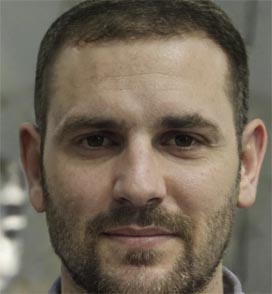

Many researchers have investigated the advantages of using artificial intelligence in ECT. The experimental data of thickness measurements proved the accuracy of this approach at different lift-offs to be within 2%. This index can be obtained from the measured multifrequency inductance spectral data.

proposed a novel index compensated peak frequency that is linked to the thickness which is virtually independent of lift-off.

The proposed index was verified by both simulation and experimental data, and the permeability error reduced within 7.5%, which was caused by liftoff. This modified index is a mathematical manipulation derived from the relation between the permeability and zero-crossing frequency from Dodd and Deeds’ method. proposed a zero-crossing frequency index to reduce the effect of lift-off for magnetic plates. High sensitivity for defect measuring and developing eddy current detectors for duplexes requires a specified sampling surface for measuring and detecting defects. Signal EC is highly effective in reducing the lift-off to 2.16% according to the thickness of the plate. The probe style and check parameters should be chosen based on a deep understanding of the flaw that the technique is applied to for investigation purposes. Much progress has been reported in the literature, causing eddy current testing to become more attractive in relation to quality control and inspection fields using a pulsed eddy current signal. The eddy current method is also able to measure the thickness of coatings or paint, not only in micrometers but also up to millimeters. The condition of samples may be related to the surface cracks, sub-surface flaws and degradation of samples. ECT is also used as a quality control tool in various industries to detect a defect and inspect the condition of samples.
#Liftoff simulator alternative crack#
Various parameters were considered for the testing methods, which include the type of signal, the amplitude of the signal and the phase angle of the probe, where each of these parameters will affect the signal whenever there is a crack in the plate or workpiece surface. The application of eddy current is widespread for measuring electrical conductivity, for defect identification on metallic material and for assessing coating thickness on pipes. Nondestructive evaluation (NDE) deals with the inspection of an object, determining its properties without destroying its usefulness. Finally, the ECECT is used to measure lift-off in a range of approximately 1 mm to 5 mm, and the performance of the proposed method in non-linear cracks is assessed. In this result, the ECECT gives an optimum correction for the lift-off, in which the reduction of error is only within 0.1% of its all-out value. The depths of the defect coefficients of the probe’s lift-off caused by the coating thickness were measured by using a designed setup. The ECECT simulation and hardware design are proposed, using the fuzzy logic technique for the development of the new methodology. The detailed description of the proposed probe selection, design and instrumentation of the error compensation of eddy current testing (ECECT) along with the absolute probe and differential probe relevant to the present research work are presented. The general descriptions of the proposed ECT technique include details of the system design, intelligent fuzzy logic design and Simulink block development design. In this paper, a novel eddy current testing error compensation technique based on Mamdani-type fuzzy coupled differential and absolute probes was proposed. This problem can lead to the occurrence of pipe leakages, besides causing the degradation of a company’s productivity and most importantly risking the safety of workers. It will be an uncertain decision condition whether the defects on a workpiece are cracks or scratches. The coating thickness or lift-off will influence the measurement of defect depth on pipes or plates. Eddy current testing (ECT) is an accurate, widely used and well-understood inspection technique, particularly in the aircraft and nuclear industries.


 0 kommentar(er)
0 kommentar(er)
